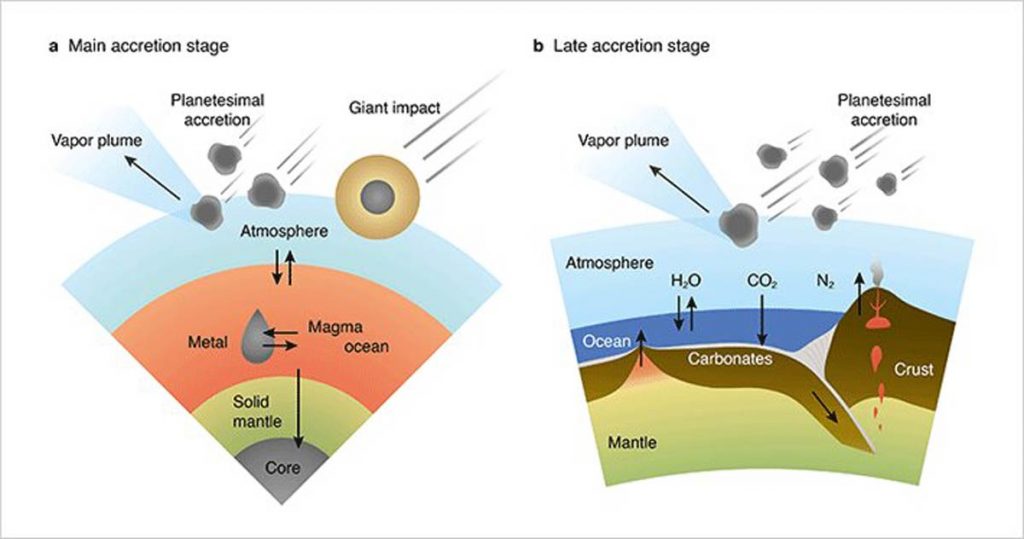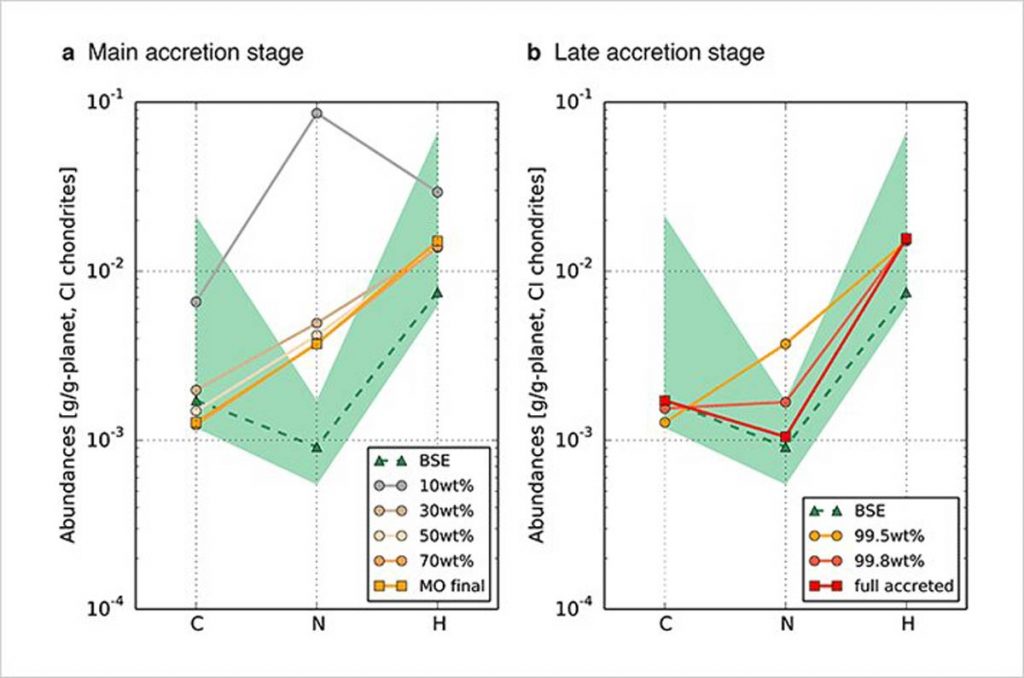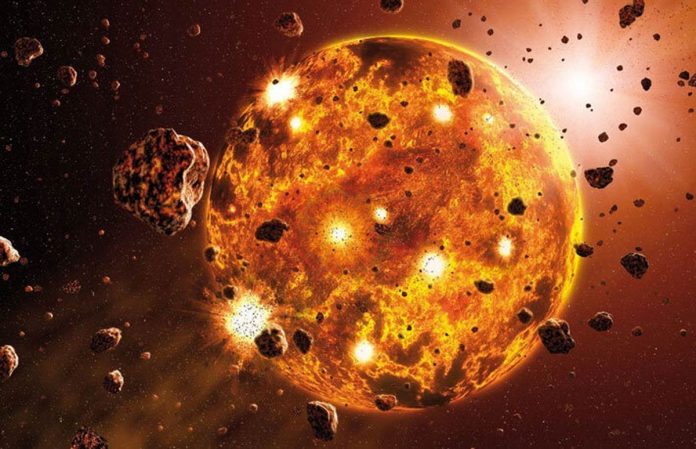Earth’s surface environment has large amounts of hydrogen, nitrogen and carbon. H, N and C are called “volatile” elements by geoscientists. Because of the compounds they form are gases at standard temperature and pressure. The distribution of these gases and their abundance in Earth is thought to have formed when Earth was formed. These gases are major components of our atmosphere and oceans and also important elements for life. So, the understanding of the origin of these gases are crucial in order to understand how Earth developed a habitable environment. Haruka Sakuraba of Tokyo Institute of Technology and Hiroyuki Kurokawa of the Earth-Life Science Institute at Tokyo Institute of Technology have done research that shows Earth’s formation process holds the answer of all our questions.
The first solid materials to form in the early Solar System were Chondritic meteorites. Scientists thought that they have delivered Earth’s volatile elements as they contain some isotopes. The abundances of C, N and H in the “bulk silicate Earth” is totally different from their abundances in chondrites. In the “bulk silicate Earth”, there is a notable lack of nitrogen. Because of these discrepancies, the origin of Earth’s major volatile elements continued to stay mysterious. Previous research has emphasized that maybe non-chondritic, differentiated meteorites or asteroids have delivered them.
The new research found out that BSE’s C, N, and H depletion pattern is influenced by the continual in fall of chondritic bodies. The study shows as Earth was a molten ball of rock in its earliest stages, huge amount of C must have been removed into Earth’s core. As Earth cooled down and oceans have been formed, C and H have deposited as water and carbonate rocks. But N remained in the atmosphere. In the atmosphere, subsequent explosive meteorite has blasted some N in the space.
The researchers have made a model of the evolution of the volatiles’ abundances in the atmosphere and also in the oceans, crust, mantle, and core from the earliest stages of Earth’s formation. Scientists have taken all these factors into account and as well as constraints about the Earth’s formation. Constraints include early mineralogy and the size distribution of incoming asteroids and meteorites to Earth. Then the scientists have compared the final volatile inventory under several conditions to the current Earth.

Scientists have studied a region around stars called “habitable zone” or HZ. This is a distance at which a planet receives enough energy from sunlight and can keep a planet’s surface cold enough to have water but warm enough to not to freeze water. A planet’s mass and chemical composition decides whether a planet exists in the HZ or not. Low-mass planets easily lose volatiles because of gravitational escape. Planetary atmospheres also warm up planets by trapping outgoing infrared radiation.

The team of the scientists have said that their model has some uncertainty in their parameters. For example, silicate magma and core-forming metal have elements partition between them and the order of magnitude in it is uncertain. But the scientists have incorporated all the processes into a single model. They have quantified the influence of their uncertainties by running the model many times with different parameters.

